Are you trying to figure out if ServiceNow or Zendesk is the better ITSM solution for your company?
Both ServiceNow and Zendesk are well-established in the ITSM space: ServiceNow with its enterprise-grade depth and CMDB-driven orchestration, and Zendesk with its stronger focus on omnichannel ticketing and user-friendly agent workflows.
Choosing the right solution, therefore, isn’t easy, as it depends on your team’s size, budget, and whether you need full ITIL lifecycle capabilities (ServiceNow) or a streamlined service desk that prioritizes speed and ease-of-use (Zendesk).
➡️ In this buyer guide, I’ll be breaking down the key features, pricing, and customer feedback for both platforms to help you pick one with confidence.
💡 I’ll also introduce you to a third option that combines flexibility, affordability, and ease of use in one comprehensive ITSM platform: SmartSuite.
TL;DR
✅ ServiceNow is best for enterprises that are looking for a highly customizable, ITIL-aligned software with a huge ecosystem of modules (incident, change, asset, service management), best-in-class automation, and plenty of native integrations.
Even though it can be powerful, the tool is rather expensive and often complex to implement and maintain.
✅ Zendesk is a strong choice for organizations that want a modern, omnichannel help-desk with powerful out-of-the-box automation, a searchable knowledge base, and a large marketplace of integrations.
Despite this, costs can rise as you add contact-centre, analytics, or AI modules.
✅ SmartSuite offers the best value-for-money with an all-in-one work management solution that goes beyond ITSM. The platform combines customization, templates, and built-in communication features at a lower entry price.
However, its integration depth is currently more limited.
ServiceNow vs. Zendesk vs. SmartSuite: ITSM Features
TL;DR:
- ServiceNow offers advanced ITSM modules for incident, change, problem, and asset management. The tool also excels at deep ITIL alignment, extensibility, and comes with a large marketplace of integrations.
- Zendesk delivers a user-friendly, automation-first support platform that centralizes email, chat, voice and messaging into one ticket stream, accelerates common responses with macros and triggers, and reduces ticket volume through an AI-powered self-service.
- SmartSuite delivers a no-code, all-in-one ITSM and work management solution that helps your team standardize service requests, ticketing, asset tracking, and internal IT projects. It stands out for IT teams that want flexible, fast-to-deploy ITSM.
Let’s go over the 3 tools’ features, starting with SmartSuite: 👇
SmartSuite’s ITSM Features
SmartSuite is a no-code, easy-to-use ITSM platform that helps you standardize critical IT processes, organise projects, and remove the traditional obstacles in the tech landscape.
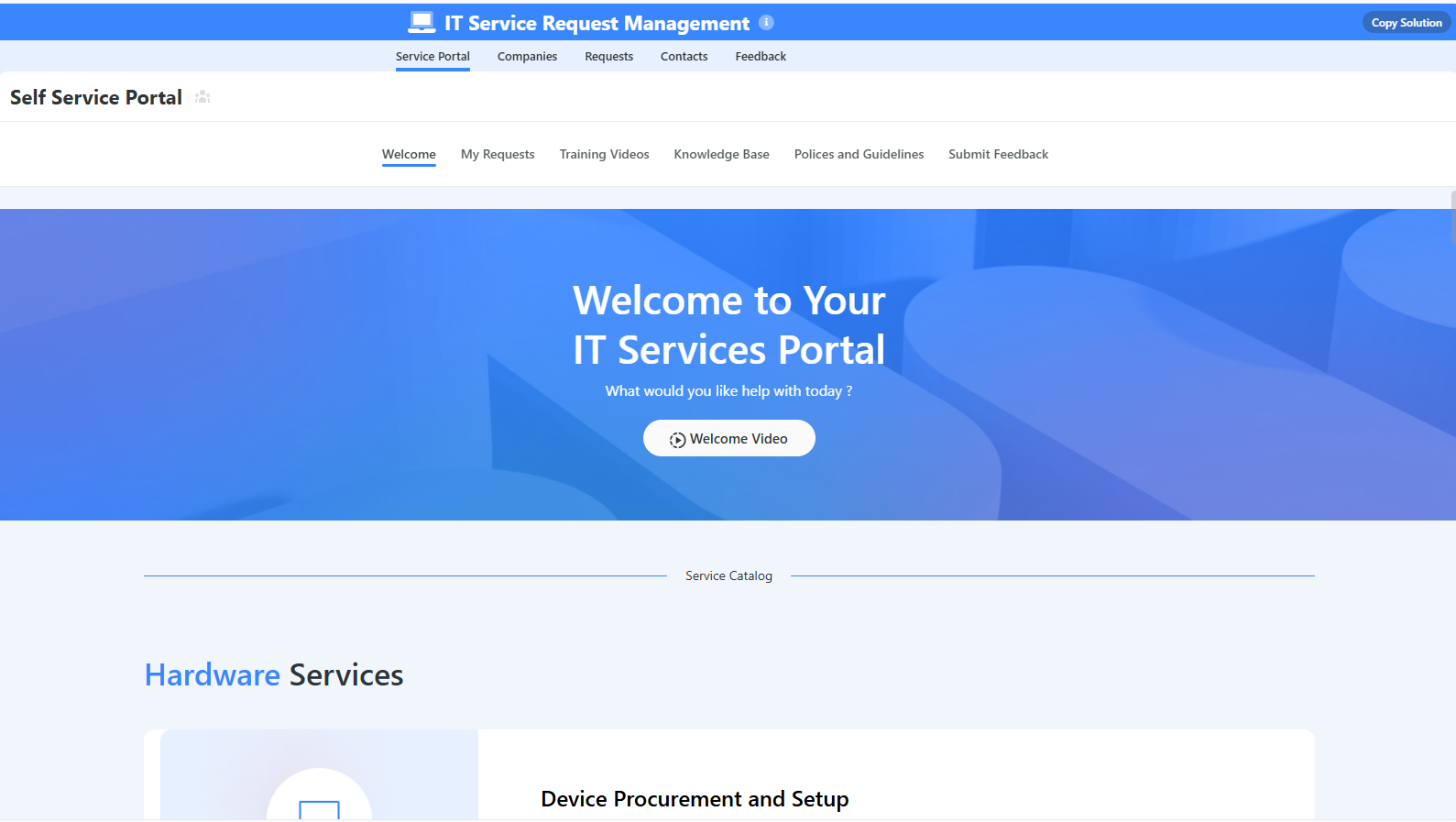
Here’s a walkthrough of the software and our solution for IT leaders:
Let’s go over the features that make SmartSuite the best choice for small and large IT teams looking for an ITSM platform: 👇
All-In-One ITSM
SmartSuite helps both SMEs and enterprises manage their IT processes, projects, and assets in a single, unified solution.
Our no-code, easy-to-use software lets you automate all technical processes with ease.
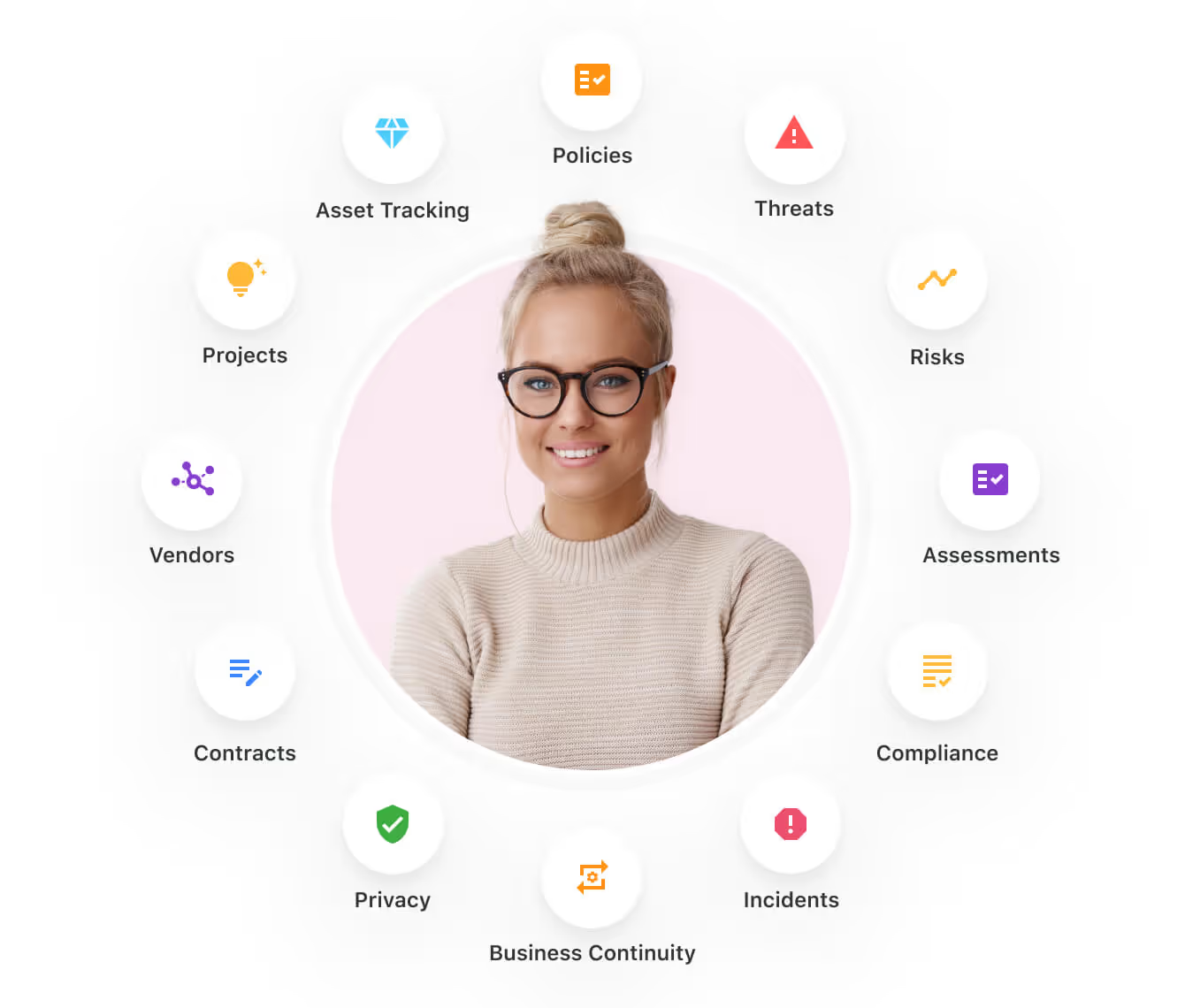
Here are the use cases that your IT team will get:
- Manage critical IT processes: Manage IT data and workflows in one place, from deploying help desk and issue management solutions to ensuring core business operations stay uninterrupted.

- Track tickets & issues: You can deploy a help desk and issue management solutions.

- Manage your IT assets and licenses: You’ll be able to track all of your IT assets, to whom they are deployed, and which tool versions are deployed.

- Manage internal IT projects: You’ll be able to plan deployments, schedule your teams, and monitor progress to ensure you deliver on time and under budget.

- Integrate with your existing systems and data to consolidate and centralize your data.

- Automate for accuracy and efficiency: Remove inefficiencies and the chance for human error by automating repeatable workflows.
- Monitor and report on your work with customizable IT dashboards: Slice and dice data, track help tickets, work requests, and more in dynamic interactive dashboards.

Standardize Your Team’s IT Workflows
Your team can streamline IT request workflows with a centralized work request process.
Our tool lets you prioritize tasks, assign IT staff and ensure that you achieve SLAs.

Your management team will also be able to monitor your IT team with flexible reports and dashboards that keep you updated in real time.
Apart from that, SmartSuite's no-code automation builder provides IT teams with a visual interface that makes it easy to respond to events and take action.
That means you can customize your ITSM workflows without technical resources.
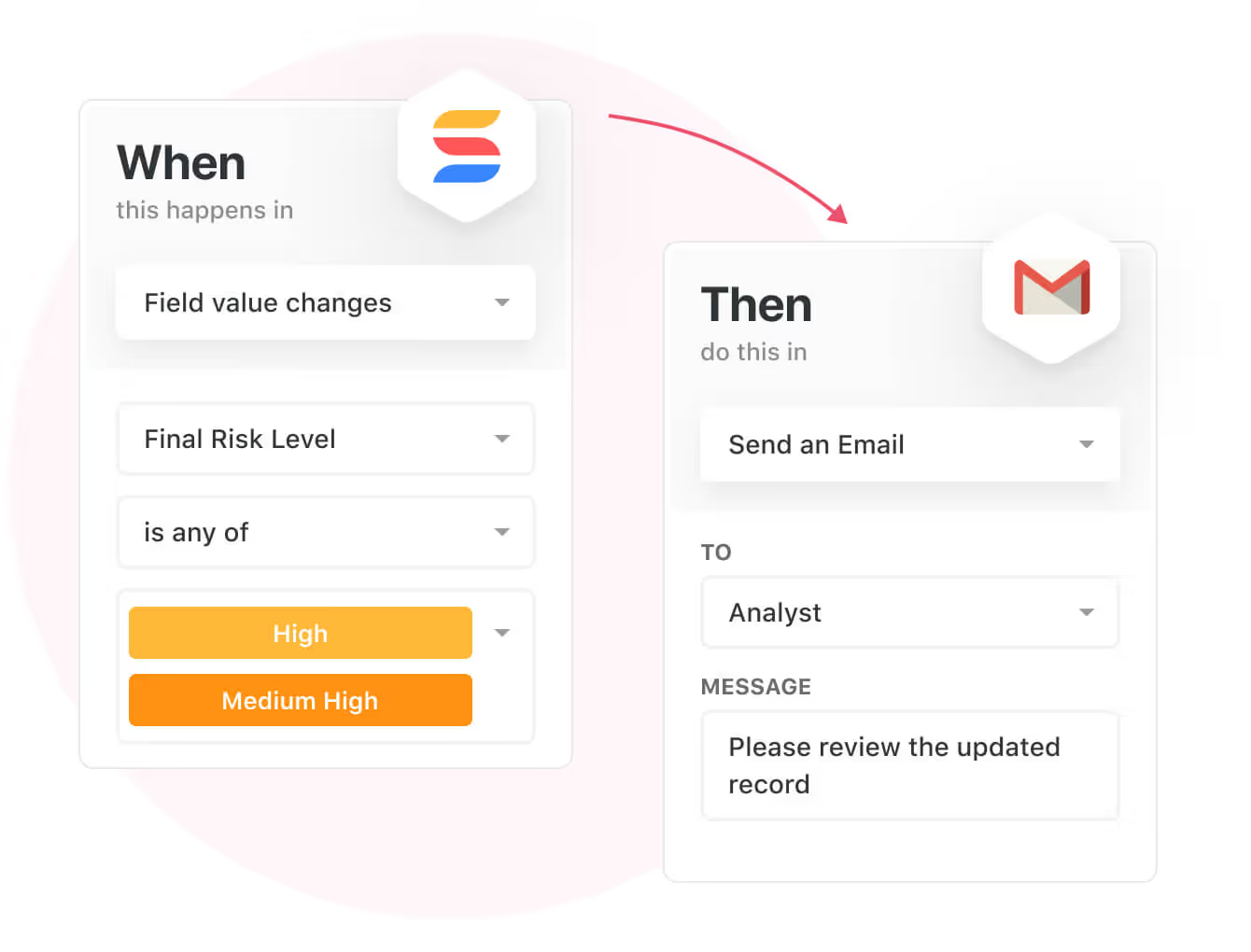
💡 Working from mobile? Stay connected to critical IT information, tickets and device information with our native iOS and Android apps.
You can use our mobile apps to share files, images, updates and other feedback to resolve problems and close tickets.

Pre-Built ITSM Templates
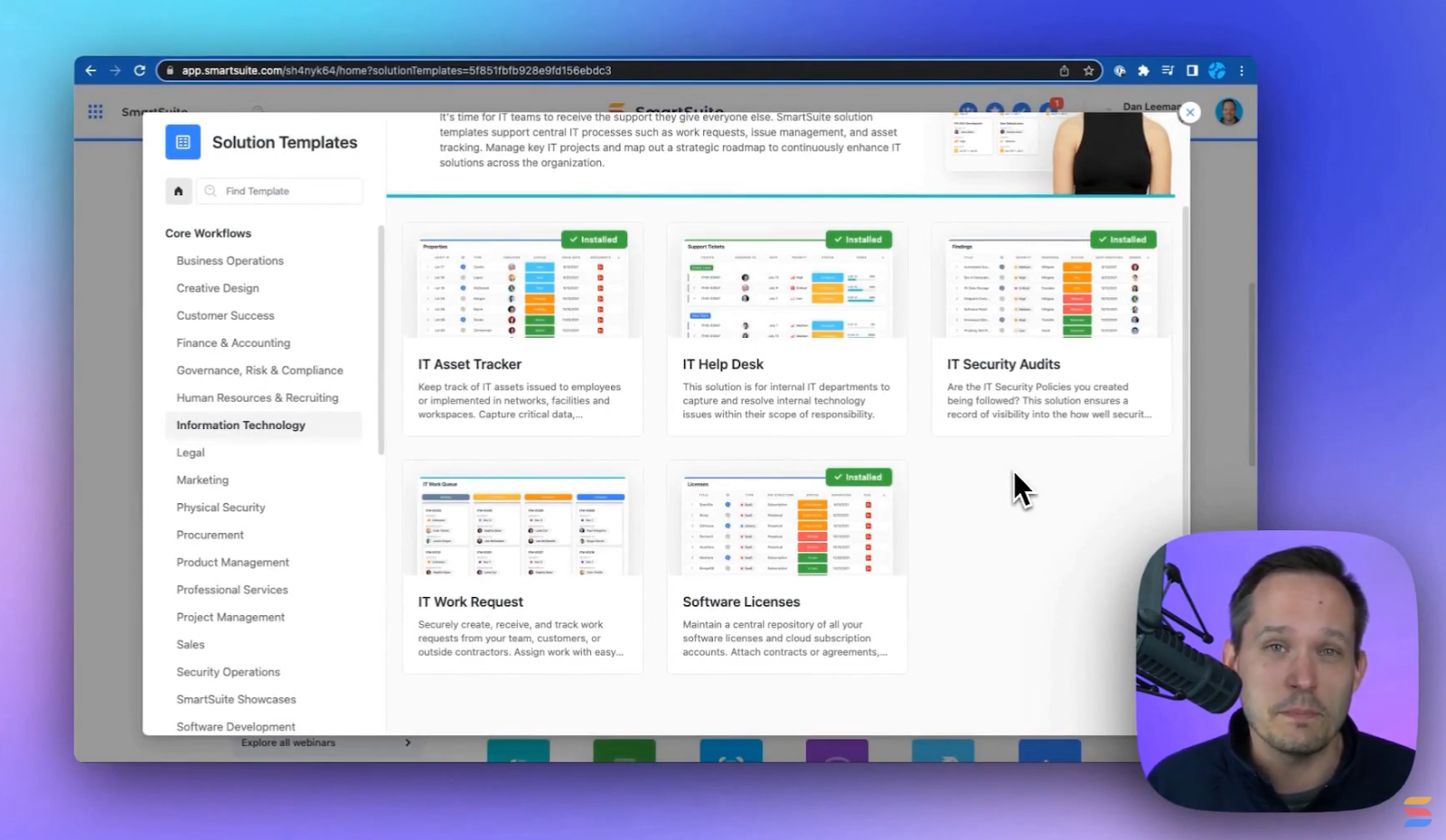
We have prepared a few ITSM templates for IT teams looking to get started right away, instead of building everything from scratch, such as an IT Help Desk.
Our ITSM template includes:
- IT Service Request Management, where your team can streamline work requests, automate repetitive tasks, and manage IT assets.
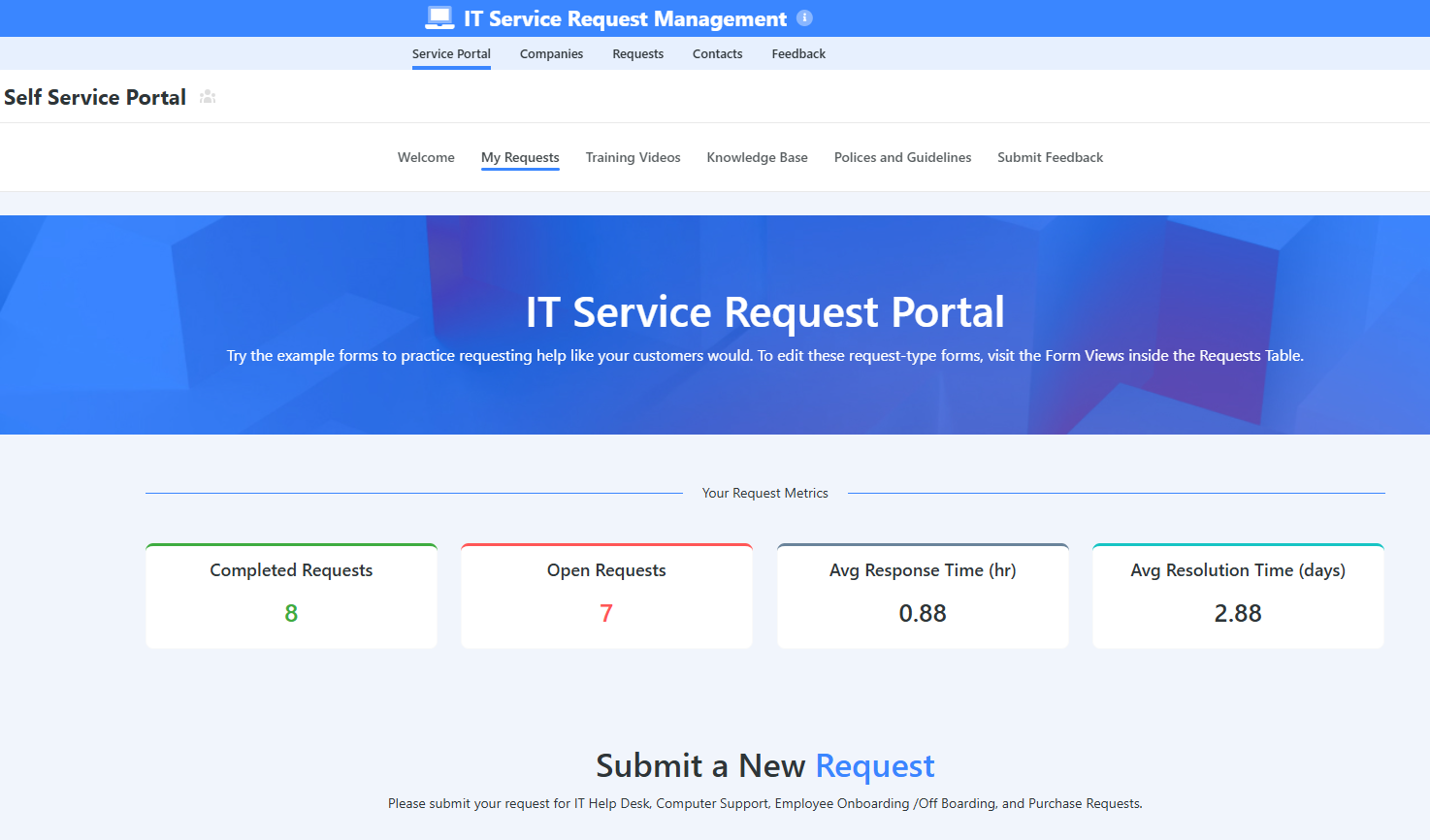
- IT Help Desk, which we built for internal IT departments looking to capture and resolve internal technology issues.
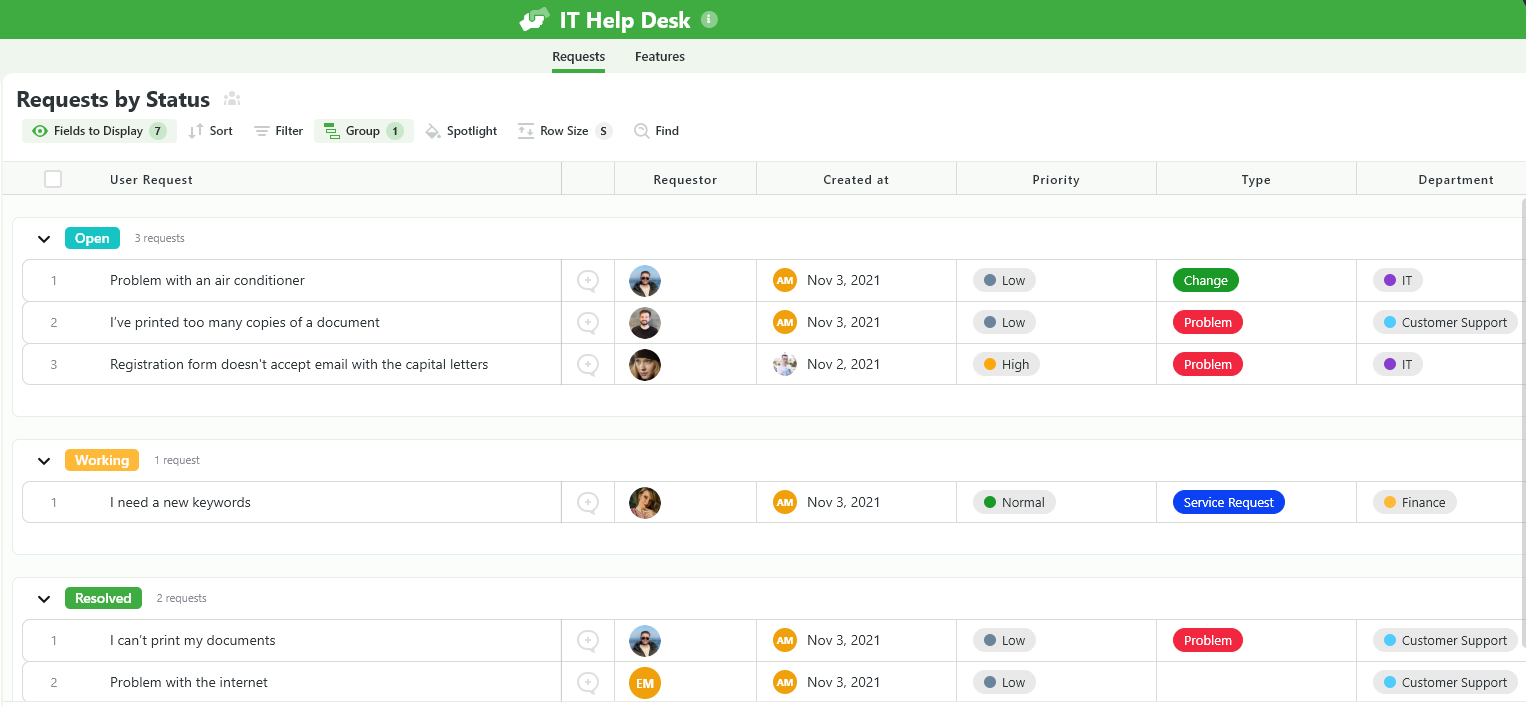
- IT Asset Tracker, where you can keep track of IT assets issued to employees or implemented in networks, facilities and workspaces.
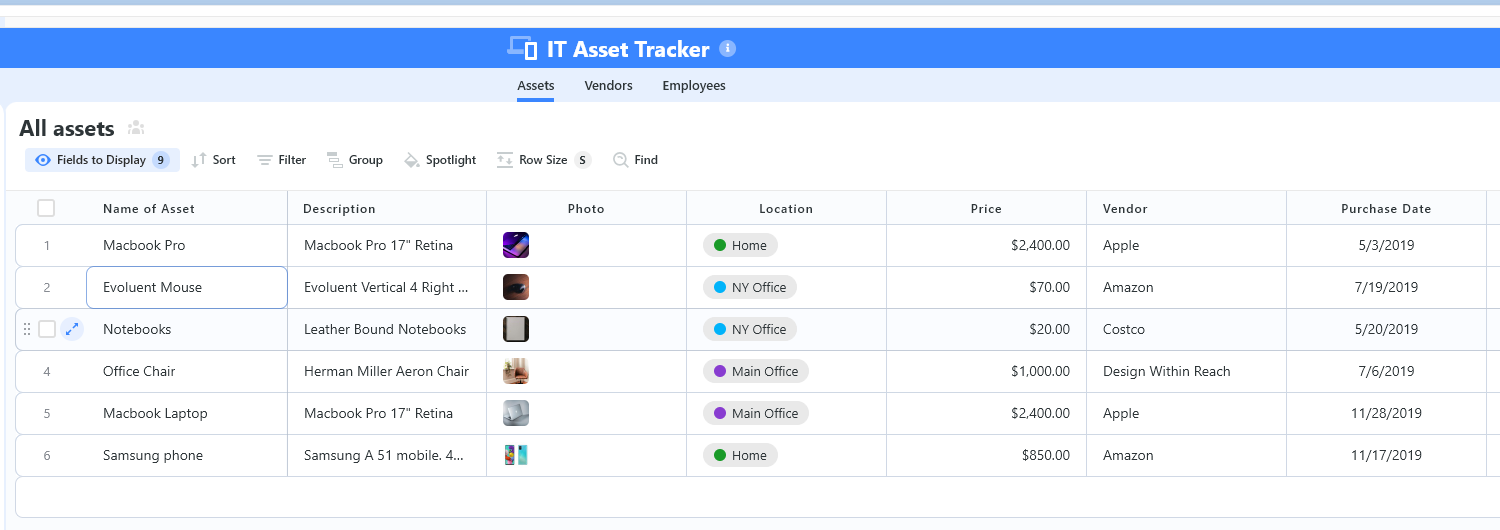
You can customize our ITSM management templates here for your organization’s required use cases, including IT Security Policies, IT Security Audits, and IT Work Requests.
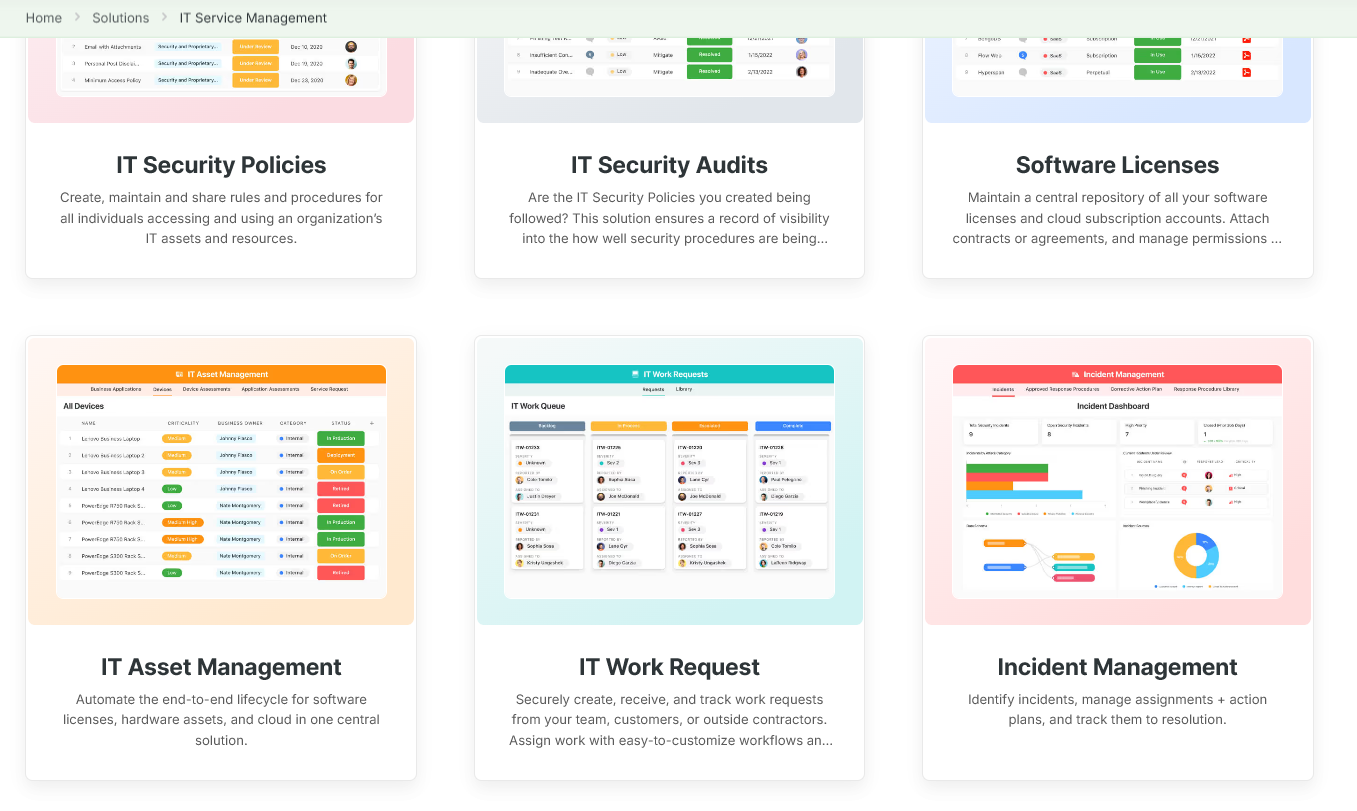
ServiceNow’s ITSM Features
Incident & Problem Management
ServiceNow offers an incident management software that helps your IT team capture, prioritize, and resolve issues through a centralized interface.
The platform supports automated workflows for escalations and SLA tracking, ensuring critical tickets are addressed promptly.
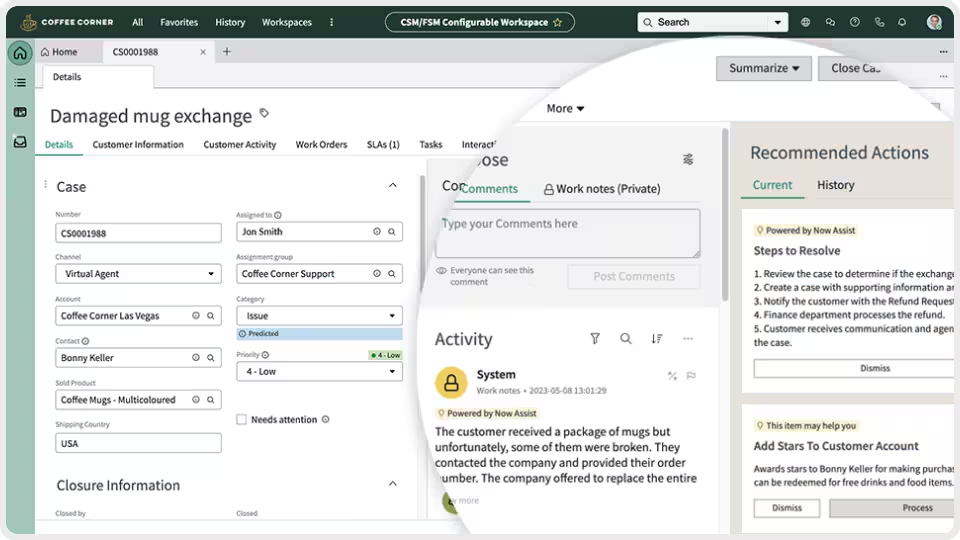
Its problem management module lets you identify root causes of recurring incidents and maintain a known-error database, so your IT fixes can be applied faster next time a similar issue arises.
➡️ Together, these mini-tools streamline issue resolution and reduce downtime by enforcing ITIL best practices and providing agents with all the context needed to better close incidents.
Change & Asset Management
ServiceNow’s change management capabilities let you plan and authorize IT system changes with minimal risk.
The software provides structured change request workflows, integration with a Change Advisory Board (CAB), and a visual change calendar to avoid conflicts and schedule updates safely.
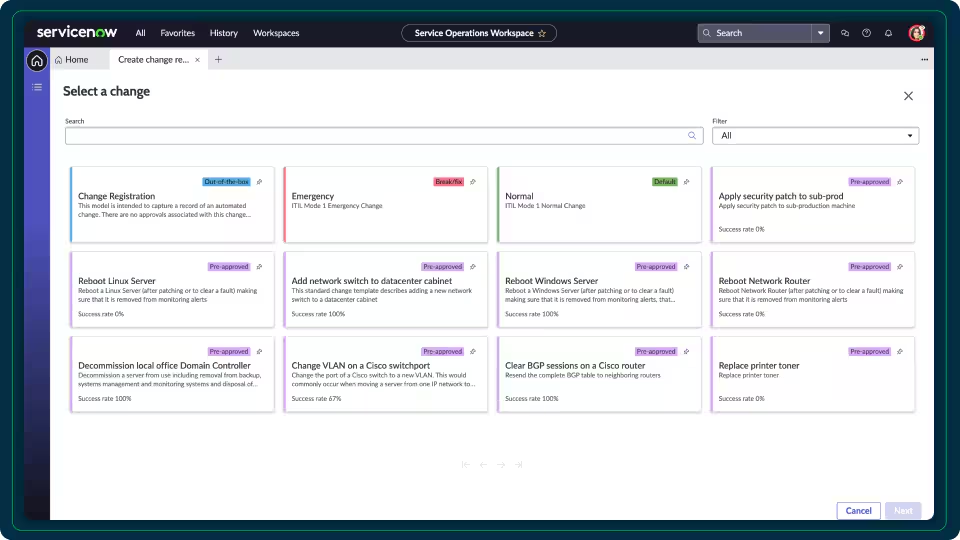
Alongside change management, the tool also includes a full asset management module that automatically discovers hardware/software and tracks inventory throughout its lifecycle.
➡️ You’ll be able to monitor warranties, licenses, and contracts to ensure compliance and optimize usage.
CMDB & Service Mapping
At the core of ServiceNow’s platform is the Configuration Management Database (CMDB), which is a single source of truth for all IT components.
The CMDB enables relationship mapping so your IT team can see dependencies between devices, applications, and services.
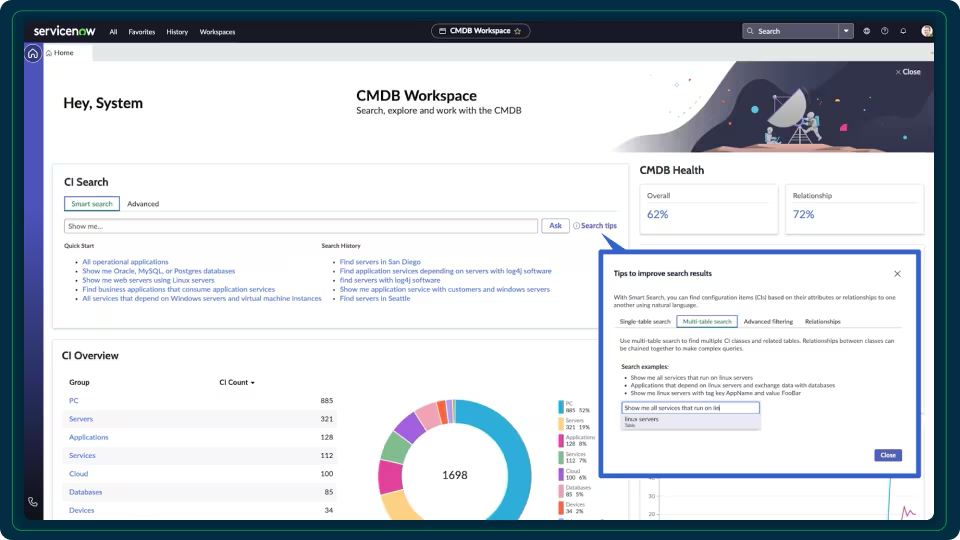
➡️ Before making any changes, your engineers can use the CMDB to predict how an update to one component might affect others (i.e., change impact analysis).
The platform also offers service mapping that visually ties CIs (configuration items) to the services they support, providing you with a holistic view of the IT infrastructure.
💡 What this means for your IT team is that you can drill from a service outage down to the underlying components and respond with minimal guesswork.
Zendesk’s ITSM Features
Omnichannel Ticketing
Zendesk centralizes requests from email, chat, voice, social, messaging apps and portals into a single ticket stream so agents don’t have to jump between tools.
➡️ The way it works is that tickets preserve full conversation history and context, which makes it easier for IT teams to triage incidents, link related requests, and maintain SLAs.
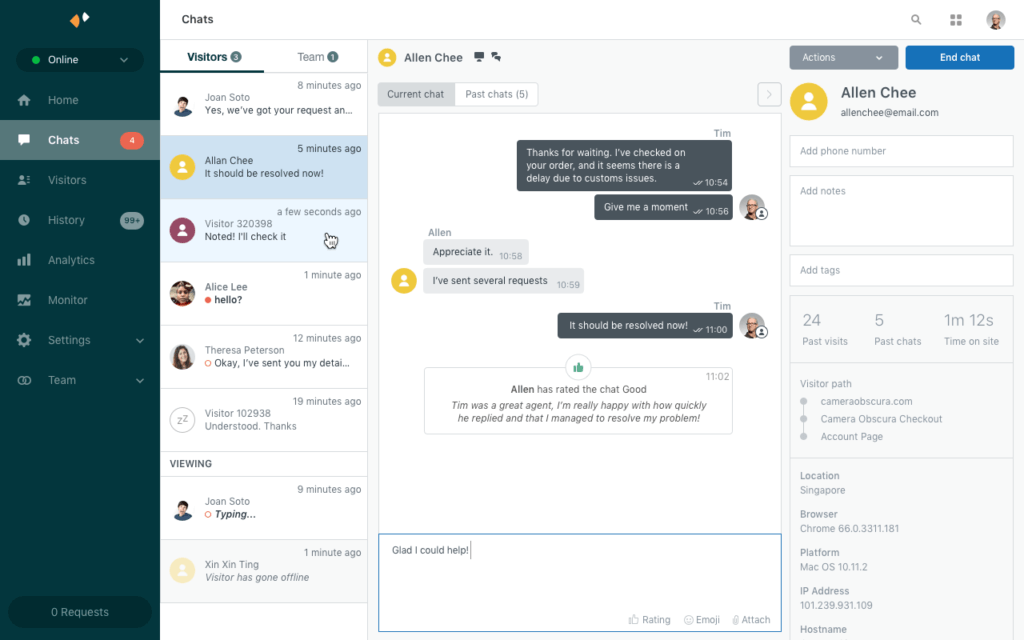
The ticketing platform supports queueing, views and advanced routing so teams can assign by skill, group, or SLA automatically.
💡 What I like about this functionality for ITSM use cases is that it reduces duplicate work and improves mean time to resolution, as every interaction lives on the same timeline.
Automation, Triggers & Macros (Workflows)
Zendesk provides best-in-class automation building blocks, including triggers, time-based automations, macros, and rules, so repetitive IT tasks (e.g., ticket categorization, SLA handling, escalation) can be automated.
Your admins will be able to combine conditions (ticket fields, requester attributes, time) to route work, escalate breaches, or apply templated responses; macros speed up agent replies for common incident types.
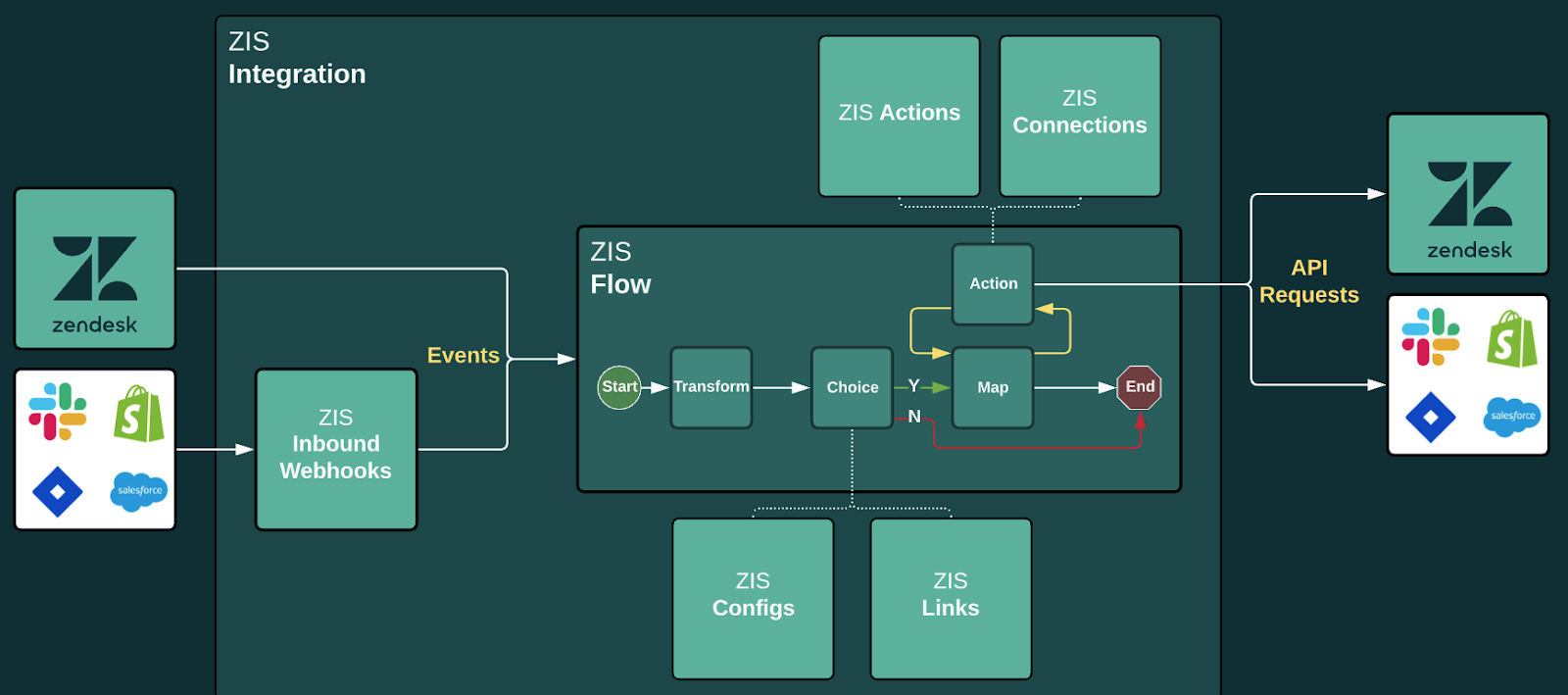
For enterprise teams that need more advanced flow logic, Zendesk also exposes action flows and integrations that let you call external systems as part of a workflow.
The net result is less manual routing and more consistent handling of routine IT requests.
Knowledge Base & Self-Service
Zendesk Guide makes it straightforward to publish a searchable help centre and internal knowledge repository where your IT team can store runbooks, KB articles, and onboarding docs.
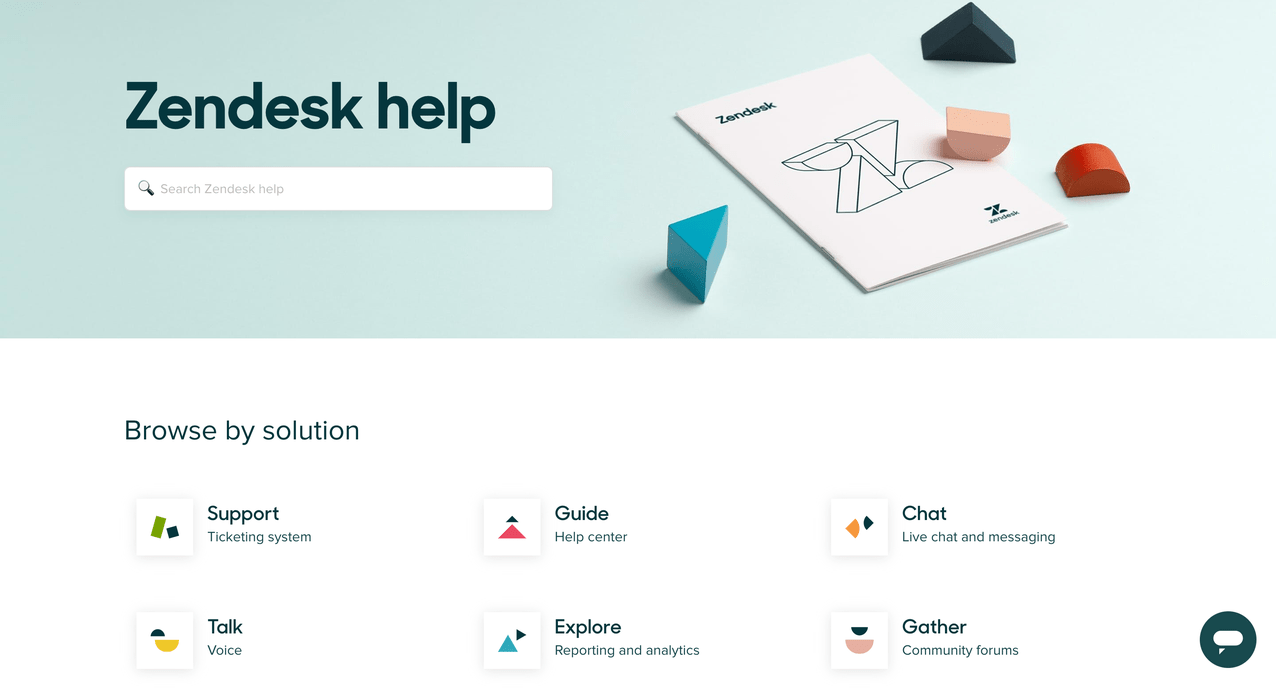
When combined with Zendesk’s AI features, the tool can surface relevant articles automatically to end users and suggest answers to your human agents.
➡️ The knowledge base supports versioning, permissions and article structures suitable for both external users and internal IT staff portals.
Integrations: ServiceNow vs. Zendesk vs. SmartSuite
SmartSuite’s Integrations
SmartSuite integrates directly with ITSM-related tools and offers additional connectivity through Zapier, Make, and native API support.
The platform covers the essentials for IT teams looking to centralize service workflows, compliance, and incident management without heavy setup, including:
- Microsoft Teams and Slack for communication.
- Google Workspace and Microsoft 365 for productivity.
- Okta for identity and access management.
- Jira for development and issue tracking.
- Zapier & Make for extended workflow automation.
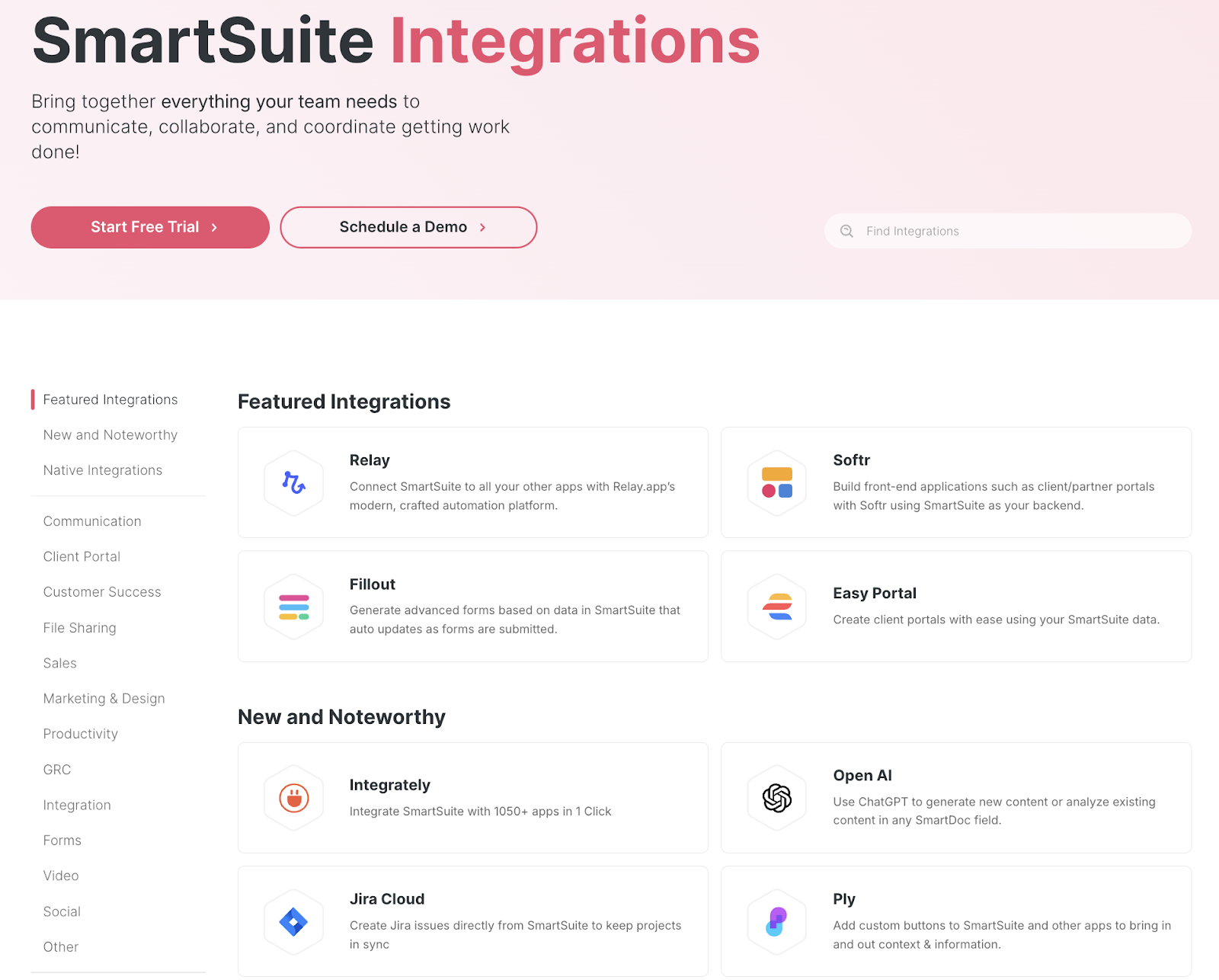
ServiceNow’s Integrations
ServiceNow offers one of the best integration marketplaces on the market, with connectors and APIs for virtually every enterprise system.
From HR and finance to productivity and DevOps solutions, its ServiceNow IntegrationHub allows IT teams to unify workflows across business functions:
- Microsoft Teams and Slack.
- Jira and Confluence.
- AWS, Azure, and GCP.
- Splunk and Datadog.
- Okta and Active Directory.
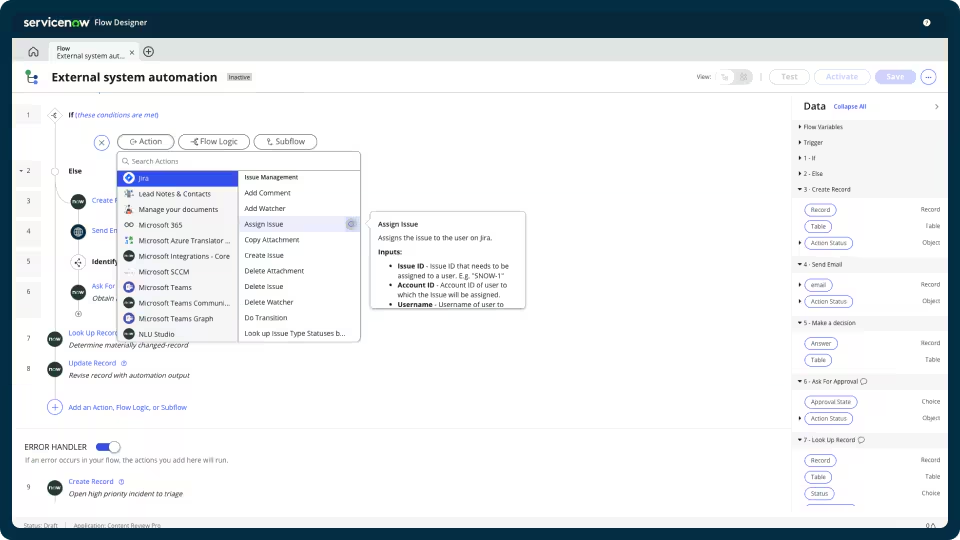
➡️ Note: Some of ServiceNow’s integrations can require technical expertise and additional licensing costs.
Zendesk’s Integrations
Zendesk provides a broad integration ecosystem (with almost 2,000 connectors) via its Marketplace, public APIs and Zendesk Integration Services (ZIS).
Common enterprise integrations include:
- Microsoft Teams & Slack: In-channel ticket creation, notifications and context sharing.
- Jira & Confluence: Bi-directional issue linking and developer handoffs.
- AWS, Azure & GCP: Cloud ticketing connectors and data sync.
- Splunk & Datadog: Monitoring alerts that create incident tickets with link-back to logs/traces.
- Okta & Active Directory: SSO, SCIM provisioning and identity integration.
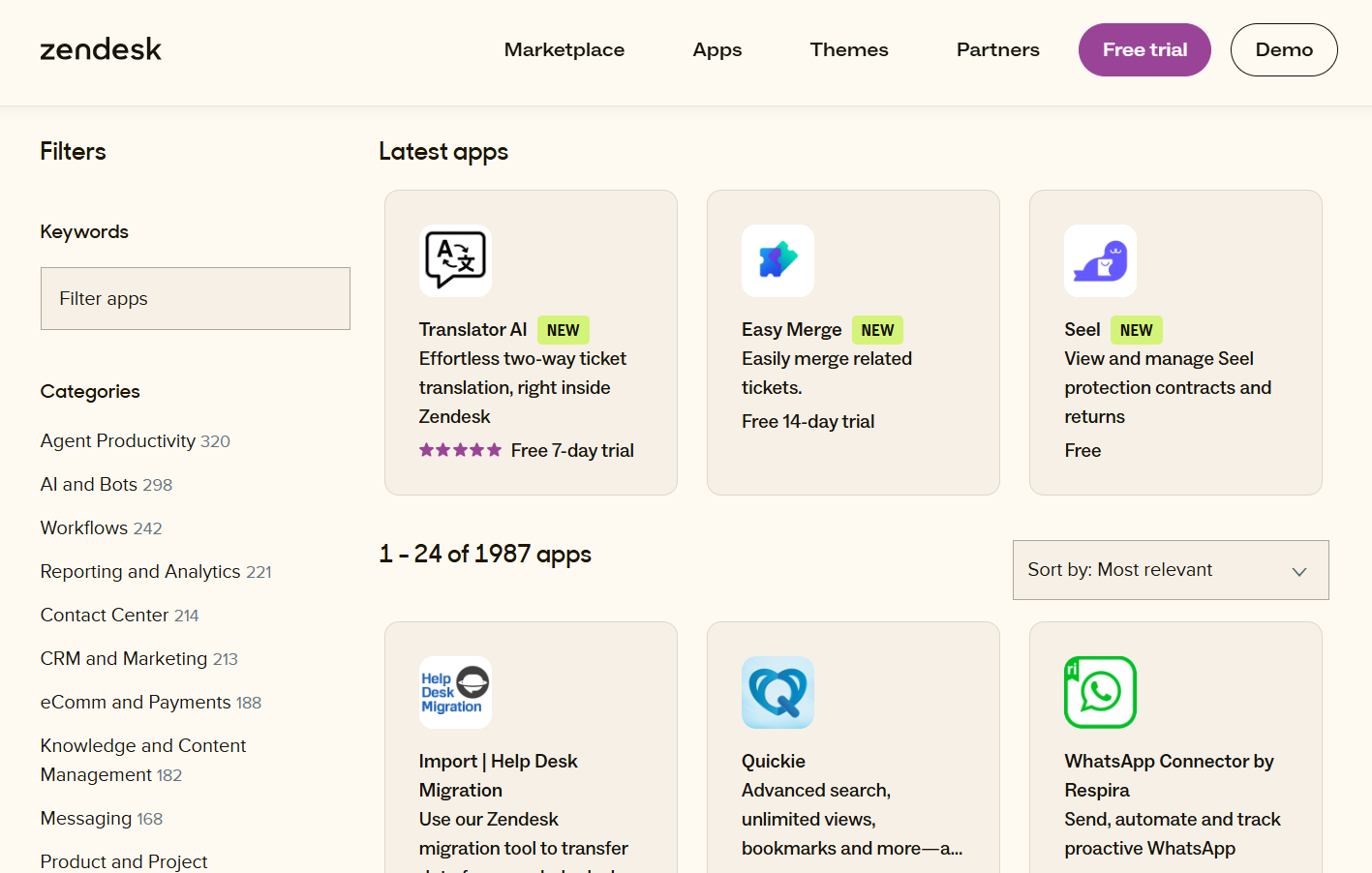
💡 You’ll be able to use its marketplace apps for out-of-the-box connections and ZIS/APIs (or ‘’middlemen’’ like Workato/Zapier) for deeper, bidirectional or event-driven integrations.
Pricing: ServiceNow vs. Zendesk vs. SmartSuite
SmartSuite’s Pricing
Unlike tools like ServiceNow, SmartSuite offers a free-forever plan with access to 250+ automation actions, team collaboration, multi-dashboard views, and more.
There are four paid plans with a 14-day free trial (no CC required):
- Team: Starts at $12/user per month, including Gantt charts, timeline views, 5000 automation runs, and native time tracking.
- Professional: Starts at $30/user per month and adds two-factor authentication, Gmail & Outlook integrations, and unlimited editors.
- Enterprise: Starts at $45/user/month and includes access to audit logs, data loss prevention, and 50,000 monthly API calls.
- Signature: A custom plan tailored to your needs and team size with no predefined limits.
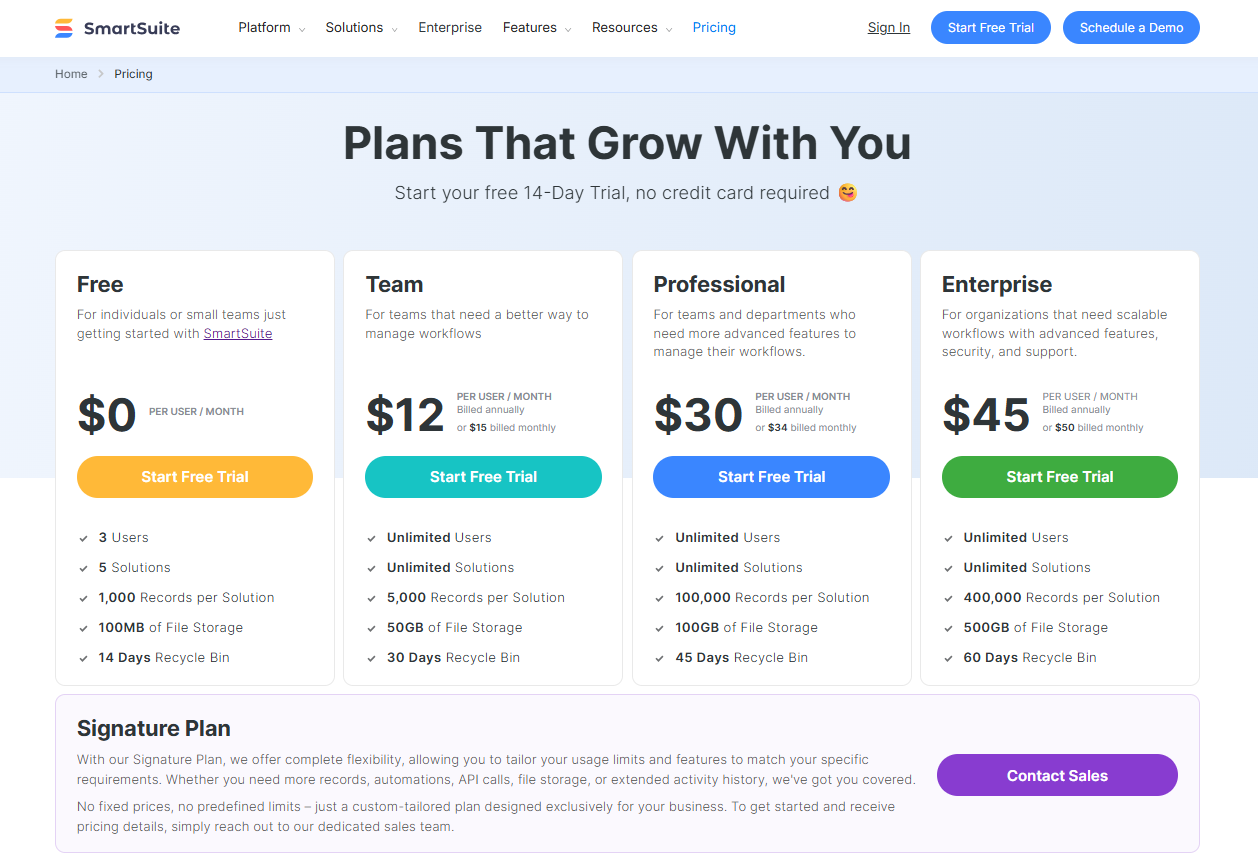
ServiceNow’s Pricing
ServiceNow’s pricing is not disclosed, so you’d have to book a demo with their team to get a quote.
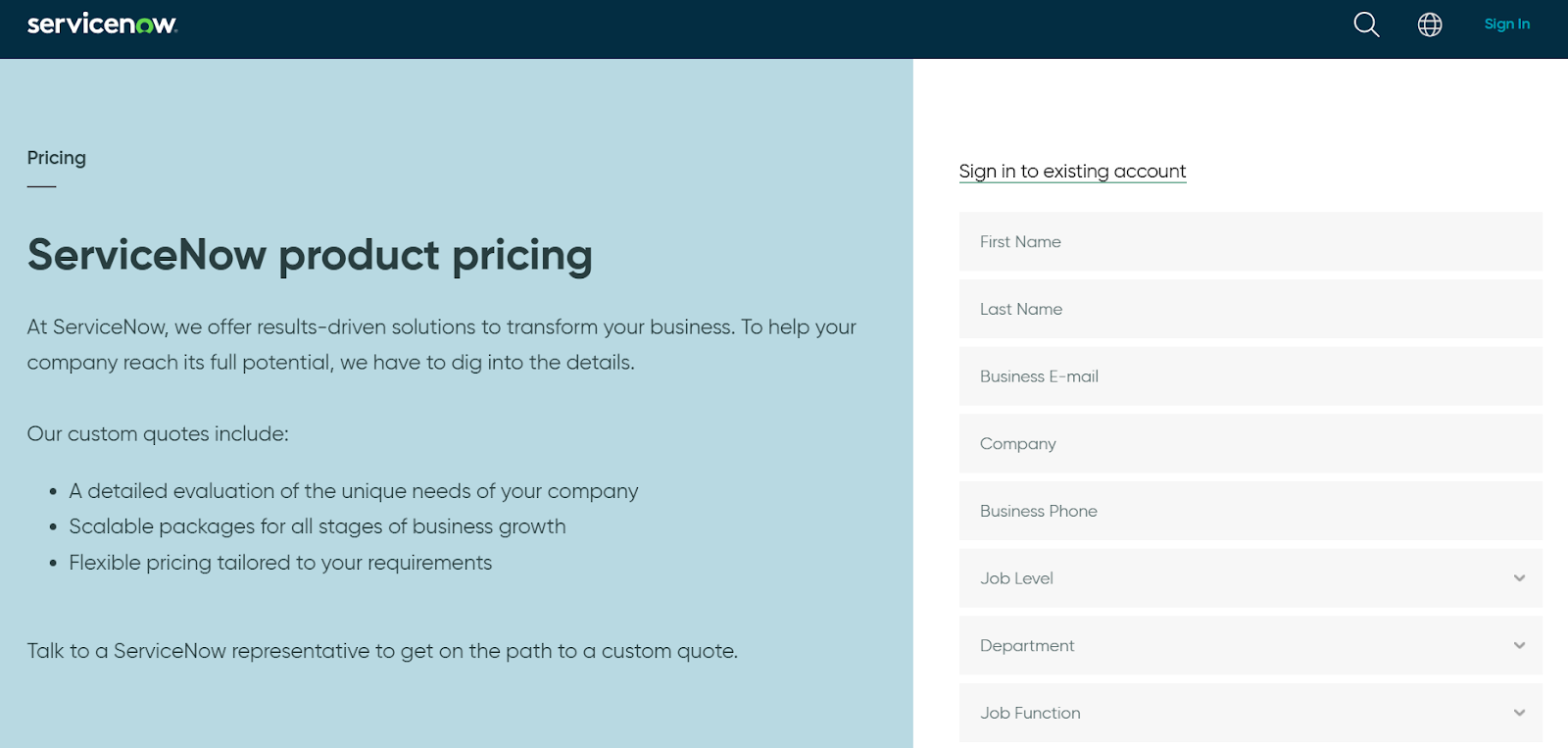
How Much Does ServiceNow Really Cost?
I did find ServiceNow customer and public reviews, which show that the average cost of ServiceNow contracts can range between $50,000 and $500,000 annually.

According to insiders, the pricing structure depends on:
- The number of users/licenses you require.
- The types of product required (IT Service Management, HR Service Delivery, or Now platform).
- The level of support that you’ll need.
- The additional features or configurations.
Zendesk’s Pricing
Zendesk pricing is tiered for employee (internal) and customer-facing use, and plans are per agent and can be billed either monthly or annually.
Employee (internal IT and HR service):
- Suite Team: $55/agent/month: Omnichannel ticketing (email, chat, voice, messaging), help centre, prebuilt dashboards, macros, triggers/automations and access to 1,000+ apps.
- Suite Growth: $89/agent/month: Everything in Team plus approvals, multiple ticket forms, light agents, SLAs, CSAT, multilingual support and a service catalogue for internal self-service.
- Suite Professional: $115/agent/month: Adds skills-based routing, custom & live analytics, side conversations, community forums, data location options and eligibility for advanced AI add-ons.
- Suite Enterprise: $169 /agent/month: Custom agent roles, sandbox, advanced analytics/alerts, dynamic contextual workspaces, enhanced privacy/compliance controls and enterprise admin features.
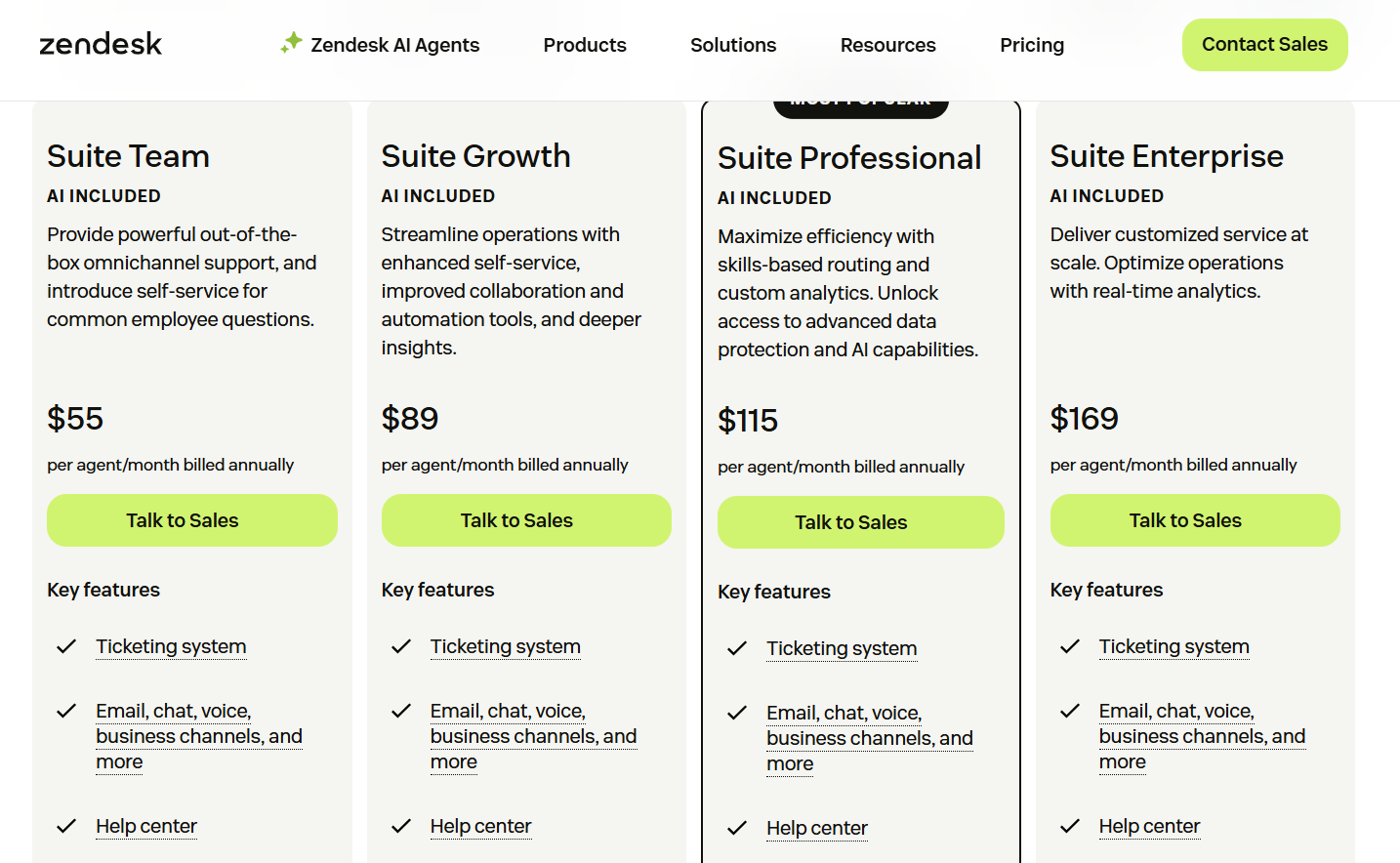
Customer-facing (external support):
- Support Team: $19/agent/month: Basic email & social ticketing, macros, routing, reporting and entry-level onboarding — a low-cost starting point for customer support.
- Suite Team: $55/agent/month: Omnichannel messaging, chat, voice, help centre and basic AI agents.
- Suite Professional: $115/agent/month: Custom reporting, layout builder, CSAT, IVR, skills-based routing and multiple help centres.
- Suite Enterprise: $169/agent/month: Enterprise controls like audit logs, sandbox, approval workflows, advanced AI/change-management features, and higher help-centre limits.
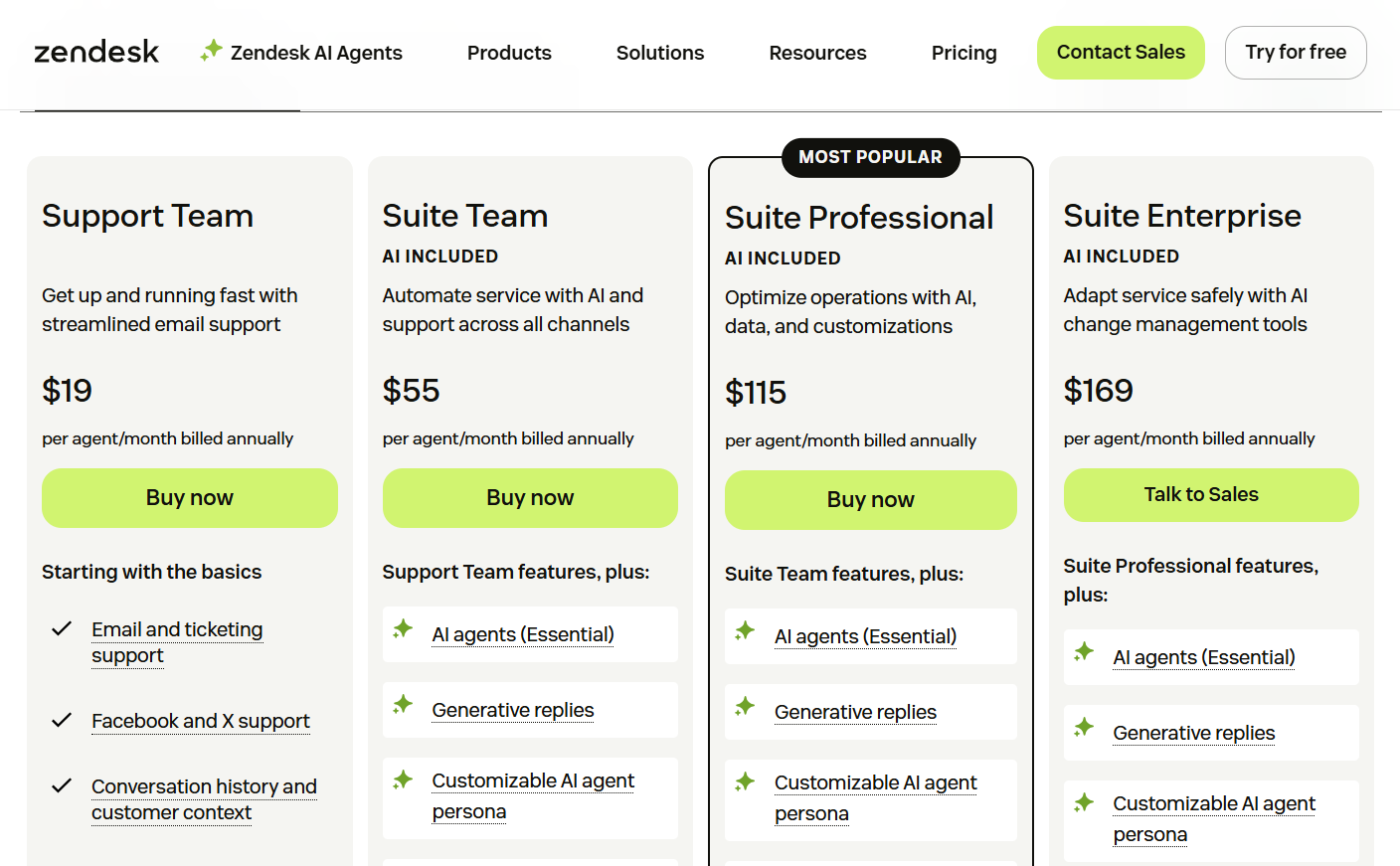
What are customers saying about ServiceNow, Zendesk, & SmartSuite?
TL;DR:
- ServiceNow users are fond of its enterprise-grade ITSM capabilities, no-code automation builder, and deep ITIL alignment. However, the tool can be complex, expensive, and requires significant time and expertise to implement.
- Zendesk customers praise the tool for centralizing multi-channel support, its straightforward ticketing, automation capabilities and broad range of integrations. Common downsides mentioned in reviews are pricing and initial setup complexity for advanced workflows.
- SmartSuite users like its user-friendly design, no-code customization, built-in collaboration tools, and strong value for money. That said, some reviewers note fewer native integrations for enterprise tools.
ServiceNow Reviews
G2 Rating: 4.4/5.
What users love:
- Powerful incident/workflow automation.
- Above-average tracking and reporting.
- Wide array of built-in ITIL processes and integrations.
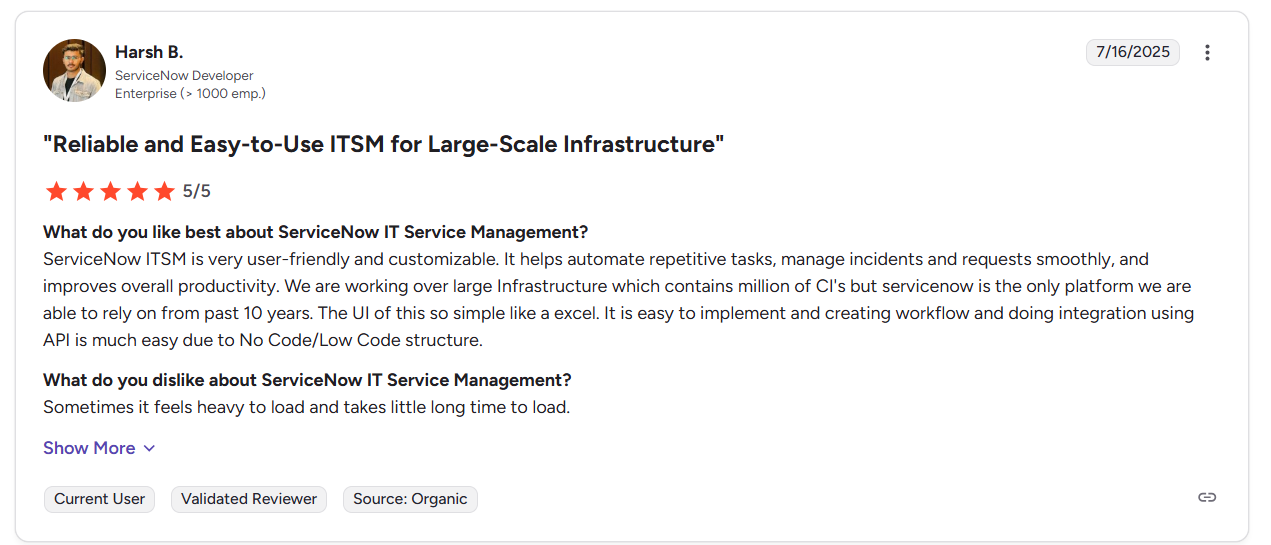
‘’ServiceNow ITSM is very user-friendly and customizable. It helps automate repetitive tasks, manage incidents and requests smoothly, and improves overall productivity.’’ – G2 Review.
Common complaints:
- A learning curve and need for training (which can mean additional costs).
- High licensing and implementation costs have pushed some organizations to remove roles to keep costs down.
- Complexity of customization.
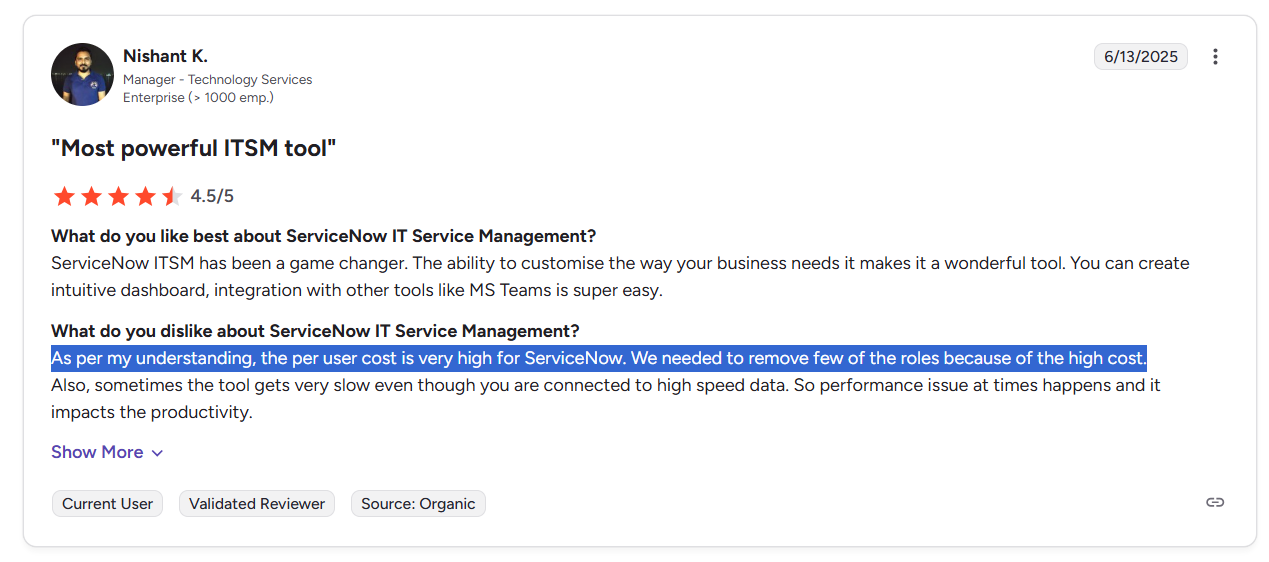
‘’As per my understanding, the per-user cost is very high for ServiceNow. We needed to remove a few of the roles because of the high cost.’’ – G2 Review.
Zendesk Reviews
G2 Rating: 4.3/5.
What users love:
- The fact that they can have a complete view of the user’s service journey.
- Triggers, macros, and routing that eliminate repetitive tasks and speed response times.
- Large marketplace and integration options that allow quick connections to CRMs, chat, and monitoring tools.
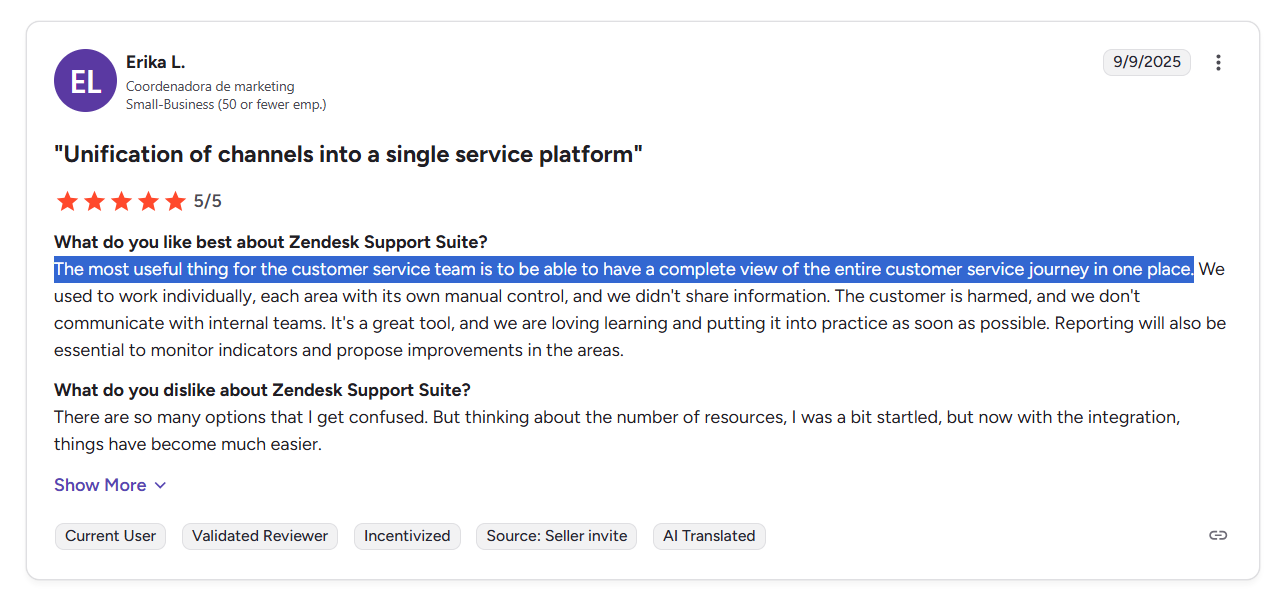
‘’The most useful thing for the customer service team is to be able to have a complete view of the entire customer service journey in one place.’’ – G2 Review.
Common complaints:
- Pricing can escalate once advanced analytics, AI features or contact centre add-ons are needed.
- Complex setup with a learning curve for complex workflows, which is why a user recommends hiring an implementation partner.
- Occasional customer frustration about Zendesk’s own customer support.
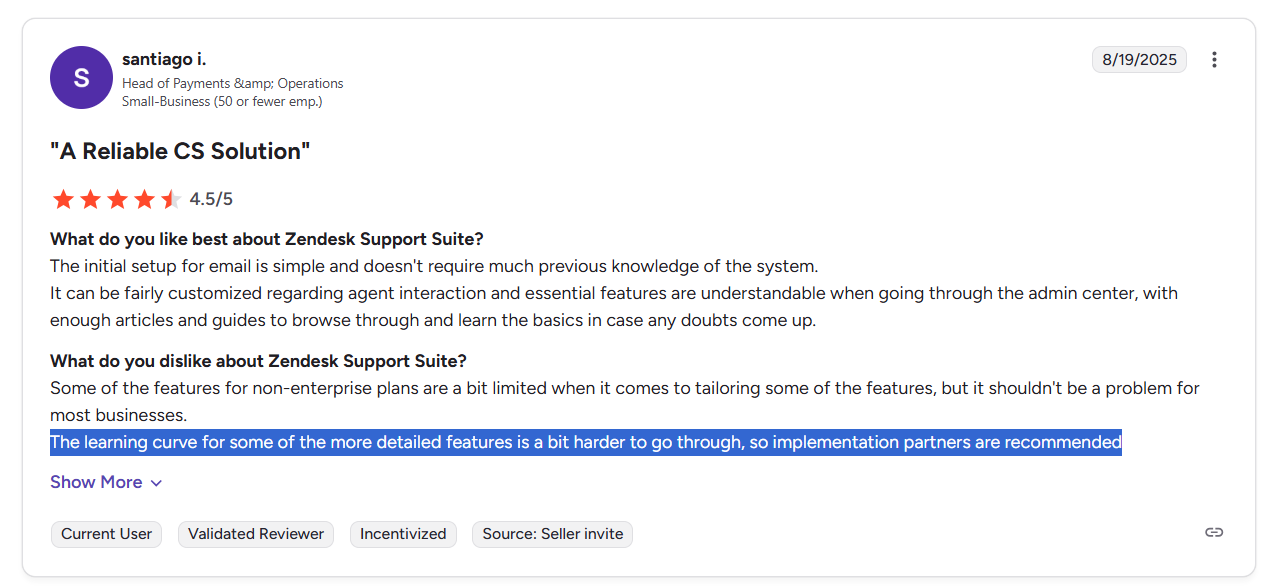
‘’The learning curve for some of the more detailed features is a bit harder to go through, so implementation partners are recommended.’’ – G2 Review.
SmartSuite Reviews
G2 Rating: 4.9/5.
What users love:
- Intuitive, spreadsheet-like user interface.
- Extensive customization and pre-built ITSM templates have helped teams get started in days and not months.
- Built-in collaboration and strong value for money.

‘’I love how intuitive SmartSuite is from the moment you log in. It's easy to navigate, and the templates really made it simple to quickly realize all the potential ways to utilize the software. I love how easy it is to see progress on a project at any point, and how all files, communication and calendar are tied in within the task. So insanely simple, but there is so much you can do.’’ - Capterra Review.
Common complaints:
- Learning curve for advanced features.
- Per-user pricing can add up.
- Limited out-of-the-box integrations compared to ITSM leaders.
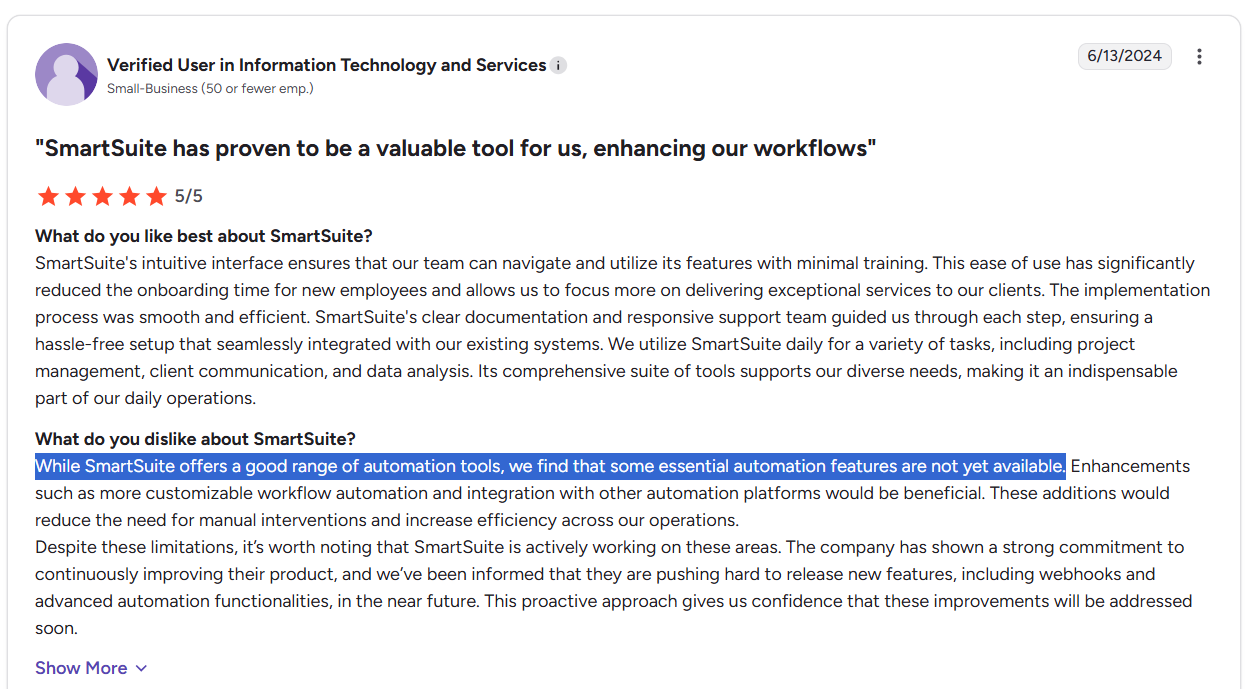
‘’While SmartSuite offers a good range of automation tools, we find that some essential automation features are not yet available. Enhancements such as more customizable workflow automation and integration with other automation platforms would be beneficial. These additions would reduce the need for manual interventions and increase efficiency across our operations.’’ – G2 Review.
Which platform should you choose for IT service management?
If you’ve read through the article so far and still haven’t figured it out, here’s a quick use case summary to help you see the 3 ITSM platforms from a bird’s eye view: ⬇️
SmartSuite is the right choice if you:
✅ Are looking for an all-in-one ITSM platform with a user-friendly, no-code interface and drag-and-drop customization.
✅ Need an affordable ITSM solution that scales from small IT teams to enterprise IT departments.
✅ Want ready-to-use ITSM templates (help desk, service requests, asset tracker) to get started quickly.
✅ Prefer built-in automation and customizable dashboards to monitor SLAs, tickets, and IT projects in real time.
✅ Are looking for mobile access for IT staff to resolve tickets, manage assets, and stay connected on the go.
SmartSuite isn’t the best option if you:
❌ Require a legacy ITSM vendor with a decades-long enterprise track record like ServiceNow.
❌ Are looking for deep, pre-built ITIL workflows.
❌ Require hundreds of native enterprise integrations (ServiceNow and Zendesk currently offer broader marketplaces).
ServiceNow is the ideal choice if you:
✅ Manage IT operations at a large enterprise or across many departments and need a single, unified platform.
✅ Require a highly customizable, ITIL-aligned solution with enterprise-grade workflows.
✅ Have the budget and resources for a full-featured platform that can scale globally.
✅ Need advanced automation, AI-driven capabilities, and extensive integration options.
ServiceNow isn’t the best choice if you:
❌ Are a part of a small or lean IT department and require a simpler, quicker setup with lower cost.
❌ Don’t look for extensive customization or formal ITIL processes.
❌ Have budget constraints, as licensing and implementation costs are high, which is why some IT leads have been looking for ServiceNow alternatives.
Zendesk is the ideal choice if you:
✅ Need an enterprise-grade help-desk that consolidates multi-channel requests into one ticketing system.
✅ Want strong out-of-the-box automations.
✅ Plan to invest in a searchable knowledge base (e.g., you work in a tech company with a low number of support articles).
✅ Value a large marketplace of prebuilt apps and connectors so you can plug Zendesk into CRMs, chat, monitoring and productivity tools.
Zendesk isn’t the best choice if you:
❌ Require a full end-to-end ITSM platform with deep CMDB, change management, and discovery tools baked in (those are the core strengths of tools like ServiceNow).
❌ Are an SME with a strict price ceiling.
❌ Want heavy custom IT workflow orchestration tied to on-prem systems without using middleware.
Set Up Your ITSM Workspace In Days & Not Months With SmartSuite’s Templates
If you’re an IT lead looking to build IT service management workflows, give SmartSuite a chance with our free plan and out-of-the-box ITSM templates.
SmartSuite’s solution for IT managers offers just the right customization, native collaboration capabilities and a library of 200+ project management templates to help teams create and maintain a project management workflow.
Here’s what's in it for your team when you try SmartSuite:
- Access to a free plan with features including multi-board views (Kanban, Chart, Map, Timeline, Card, and Calendar), 100 automations/month, and 40+ field types, including formula and linked record fields.
- No-code automation builder to set up to 500,000 trigger/action workflows.
- Built-in productivity tools, including time tracking, status tracking, and checklists.
- Team collaboration and planning tools such as whiteboards and SmartSuite docs.
- Resource management across projects and teams.
- 40+ field types, including the option to add your custom fields.
Sign up for a free plan to test the water or get a 14-day free trial to explore all its amazing features.
Or, if you’d like to talk to our team of experts, schedule a demo.
Read More
- MetricsStream Pricing: Is It Worth It In 2025?
- ServiceNow Review: Is It Worth It in 2025?
- 10 Best MetricStream Alternatives for GRC in 2025

Run your entire business on a single platform and stop paying for dozens of apps
- Manage Your Workflows on a Single Platform
- Empower Team Collaboration
- Trusted by 5,000+ Businesses Worldwide















